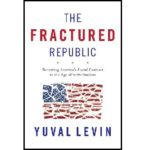In this month’s Q and A, managing editor Alexandra Davis interviews Luke Burgis, author of the popular Substack publication “The Luke Burgis Newsletter (formerly, ‘Anti-Mimetic’)” and the book Wanting: The Power of Mimetic Desire in Everyday Life (St. Martin’s Press, 2021). He is currently writing the forthcoming book The One and the Ninety-Nine: Coercion, Conformity, and the Courage for Truth (St. Martin’s Press, 2025).
The two discuss the nature of mimetic desire in a postsecular world through the lens of the work and writings of the late philosopher René Girard and in tandem with the theme of the inaugural NOVITATE conference (Washington, D.C., 2023)—“Renewal”—which Burgis hosted at the Catholic University of America last year, where he is also a professor of business.
When untethered to a telos—namely, to God—desire can set us on a path to destruction. But when rightly ordered and formed, our desires can aid us in our quest to become virtuous.
We hope you enjoy this interview.
Start your day with Public Discourse
Sign up and get our daily essays sent straight to your inbox.Alexandra Davis: Girard’s thought has been enormously influential in your work, so much so that you organized an entire conference around it. Can you explain why Girard is such an influential philosopher, particularly in our current cultural moment? And why was his work pertinent to NOVITATE’s central theme of newness and renewal?
Luke Burgis: The current cultural moment is characterized by the technological flattening of personalities and ideas—and also desires. This has made the desires of many feel thin, shallow, hollowed out. One of the most popular social media trends among Gen Z now is “yearning,” in which people talk about some vague, indescribable yearning that they have. Sound familiar? The young Saint Augustine might be right at home in this generation. I think they experience that yearning for depth, for solidity, for thickness, because everyone feels so thin.
We are saturated with “content” that all feels roughly the same because it is merely content—and digital content has severe limitations not in its reach but in its depth. Even the most profound ideas or desires are subsumed by it and become superficial. For example, celebrities are getting paid big money to promote prayer apps, and the form of this promotion looks no different from the form of any other promotion, like one for tortilla chips or spiked seltzer. This is all what Girard (and this crosses over into Marshall McLuhan’s work) referred to as a “crisis of undifferentiation,” one in which everything becomes more decadent and boringly similar because there is widespread mimesis, or subconscious imitation, and there is no creative energy born of contact with the Spirit. The sacred becomes profane. And the profane is easier to replicate, to imitate.
After being subjected to this flattening effect of mimesis for so long, will people in the next generation be able to recognize the form of revelation, the form of the Church, the form of love, the form of glory? You could think of mimesis as something that exerts a centripetal force within the sphere of models that influence us. There is a circularity to mimesis because it always comes back around to the models: they become the reference point for everything. And when you’re caught in those old patterns, new patterns can be hard to discern or respond to.
The first NOVITATE conference took its theme, “Be Not Conformed,” from part of Saint Paul’s letter to the Romans: “Do not conform yourselves to this age but be transformed by the renewal of your mind” (Rom 12:2). There seems to be a human tendency to want to conform to pre-existing models that are less than our destiny. Yet Christ, who is ever ancient yet ever new, is the alpha and omega of René Girard’s work. Humanity has been offered a way out of the never-ending doom loops of destructive mimesis, and out of the decadence of our age. The pathway is primarily one of following, not imitating. It is only in following that healthy imitation is even possible.
AD: All of the panels and speakers were concerned in some capacity with the concept of desire. I think most can agree that presently, we are experiencing deep-seated moral confusion and spiritual unrest. In Girard’s view, to what extent is disordered or misplaced desire responsible for this?
LB: I don’t know if Girard ever explicitly answered this question, but I believe he would say that disordered desire plays a major role.
We should try to go beyond Girard on this question because Girard wasn’t a theologian, and I think his mimetic theory would benefit from the wisdom of the theological tradition and the philosophia perennis.
We can think of desire as something formed at the nexus of the intellect, the will, and the heart. An understanding of the latter—the heart—has been a major contribution of the Catholic philosopher Dietrich von Hildebrand, who explains that it’s through our free and intentional response to objective values that humans can transcend the prison of the solipsistic self and begin to form their desires toward that which is true, good, and beautiful.
We apprehend these values through our intellect, emotions, and the communities of which we are a part—communities that mediate these values and desires to us. At some level, we are talking about the formation of conscience at the same time as we’re talking about the formation of desire. It’s one thing to know the right thing to do; it’s another thing to do it. One can have a malformed or unformed conscience as well as disordered desires, and the two go hand in hand.
As I interpret him, Girard is telling us that both of these often happen through unhealthy mimesis. And I think he stands more firmly in the Thomistic tradition than people who haven’t studied Girard in depth fully understand, and probably more than Girard himself even fully understood. He is commonly labeled an Augustinian, and there are good reasons for that. But had Girard had a Dominican rather than a Jesuit (Father Raymond Schwager) theological mentor, I suspect he would have both strengthened his theory and found holes in it at the same time.
That’s why I believe Girard’s ideas must continue to be developed. He is, in my mind, one of the greatest thinkers of the twentieth century. I am confident he will be viewed that way 100 years from now. But that will only happen if his ideas are wrestled with by the best and brightest of our time, and especially with the greatest minds of the Catholic Church of which he was a part.
AD: I wanted to focus on one issue that arose during one of the conference panels. The members of the panel discussed how Girard “problematizes” desire because it makes us think the solutions to our human problem of deep spiritual unrest are purely external. If we can only fulfill the objects of our desire, we will feel at ease. Yet as Augustine said, our hearts are restless until they rest in God. Some on the panel (Cynthia Haven, Girard’s biographer, in particular) concluded that ultimately, the only truly pure desire is a desire for God.
A few questions stem from this. First, how, specifically, does Girard problematize desire? Is all desire bad?
LB: One of the panelists during that session you are referencing, Johnathan Bi, is heavily steeped in Buddhist philosophy. He has been attempting to reconcile Buddhism with Girard’s mimetic theory, and he’s made a valiant effort to do so. I’ve learned much from Johnathan. But as you know, Buddhism does problematize desire; in fact, in Buddhist thought desire is the source of all suffering.
I think it’s important to bring different interlocutors to the table because it raises core issues like the one at the heart of your questions.
I don’t think it’s accurate to say that Girard problematizes desire—at least, not in the way in which Buddhism does. To the extent Girard does problematize desire, I think it’s merely in the same way that you might say Christianity itself problematizes it—and that is that desire, after the Fall, is easily disordered. Sin is the problem with desire.
For Girard, there is indeed a teleology—a final cause—of desire.
He did believe there are non-mimetic, good desires that are unmediated—such as the love of a mother for her child. Nobody needs to “model” the desire to love her child to the mother of a newborn. She simply does.
I think it’s very dangerous to say that there are “good” and “bad” desires. We could easily fall into a Manichean division of the world and see desire as either good or bad. Manichaeism and Pelagianism are both things that Girard can be accused of, though usually due to an uncharitable reading or an inadequate understanding of what he’s actually trying to say. It’s true that he writes of negative mimesis often, and positive mimesis hardly ever (and when he does, he is usually writing about it in the context of grace), but he doesn’t speak enough about the discernment of desire, as Ignatius does, where there is a recognition of the complexity of our desires.
Rather than “good” and “bad” desires, or mimetic and non-mimetic desires, I prefer to speak of thick and thin desires. Thick desires are stable and enduring, and grow in intensity the more the desire is followed (the desire to love God and seek union with God, for instance); thin desires are often experienced as fleeting and superficial, but rather than view them as “bad” we might view them as signposts for deeper desires.
I once had a confessor tell me to “follow my desires to the end” and there I would find something real. So often, though, we want to cut them short. We are far too easily satisfied. C. S. Lewis said it best:
It would seem that Our Lord finds our desires not too strong, but too weak. We are half-hearted creatures, fooling about with drink and sex and ambition when infinite joy is offered us, like an ignorant child who wants to go on making mud pies in a slum because he cannot imagine what is meant by the offer of a holiday at the sea. We are far too easily pleased.
It’s also useful to heed the words of Gabriel Marcel when it comes to desire. To paraphrase his “Life is not a problem to be solved, but a mystery to be lived,” perhaps we could instead say: “Desire is not a problem to be solved, but a mystery to be lived.” Girard himself refers to desire as a “mystery” on numerous occasions, and that seems to be the way that he thought of it. I think he spent his entire life trying to understand that mystery.
AD: The panelists got into Girard’s concept of positive versus negative mimesis, which you just explained. Can you dig into this a bit more? What are some examples in our culture of how negative mimesis affects us? And what are some examples of positive mimesis?
Should our goal be to eschew all mimetic desire? Or are there scenarios in which positive mimesis (I’m thinking of the habits and behaviors of members of a religious community, for example) can lead us toward a greater, more transcendent good?
LB: I think it’s tempting to quickly label mimesis as negative or positive. The same is true of desires. My students often ask me how to know if desires are negative or positive, and I’ll often tell them that they might start with whether that desire would lead them to violate one of the Ten Commandments (for starters). In many cases, there are ways in which we can evaluate desires using clear criteria.
In some cases, it’s more difficult. For instance: does my desire to quit my job and take this new position come from vanity or greed? In itself, the new job may be good. But my motivations for seeking it may not be.
There are clear examples of mostly negative mimesis in our culture. I believe social media is full of thin desires. These platforms are creating a world of internally mediated desire, characterized by rivalry and envy on a scale that the world has never known before. Children have access to millions of models of desire in their pockets from a very young age.
Politics is now becoming a giant mimetic rivalry, a zero-sum game, where the “other side” has taken on monstrous proportions. It has also become a scapegoating machine. (Scapegoating, according to Girard, is a consequence of a mimetic crisis.)
The media is another obvious example of negative mimesis. Content fuels more content, all oriented toward engagement; but people are more likely to engage with content that they find “charged” in some way. The best way to understand the word “charged” is charged with some mimetic character—either because it is antagonistic or engineered for reaction. The engagement with that content leads to a reflexive feedback loop that is clearly making people miserable.
Unfortunately, I do find it easier to find examples of negative mimesis—but there is positive mimesis all around us if we have the eyes to see it. Think of the beautiful and holy friendship between Francis of Assisi and Clare of Assisi, and their common desire to help one another toward a transcendent good. A similar dynamic plays out in any healthy religious community, or between genuine friends.
I have seen many teachers and sports coaches act as positive models of desire for their students and athletes, helping them to want more than they thought was wantable, and showing them a level of love, respect, and confidence that they thought they were undeserving of. They begin to take it on as part of their identity once it is first modeled to them. (In other words, the teachers are actually helping students know how to love themselves by loving them first.) This dynamic also plays out in families and the best organizations in the world.
The desire for virtue itself is kindled in us by seeing someone who possesses that virtue and imitating them in some way, which is a form of positive mimesis. Imagine walking down the street, lost in your head and in your own problems, and seeing someone perform a heroic act of kindness for a stranger in front of you. Being exposed to this kind of act should kindle in any normal person a healthy desire to be more like that—a desire to be more loving, more generous, more patient. This positive modeling of desire is why the saints are so important, but it also shows the grave responsibility of each of us, in our everyday lives, to desire great things and to act in accordance with those desires. We never know who may be watching.
The desire for virtue itself is kindled in us by seeing someone who possesses that virtue and imitating them in some way, which is a form of positive mimesis.
AD: As we become increasingly postsecular, will mimesis take on a different shape? Where do you think our desires will ultimately lead us if they are not tethered to a desire for God?
LB: This may sound like a radical answer, but I believe that in a postsecular world, mimesis has to begin taking on the shape of the antichrist—that is, the people or things that appear to mimic Christ, but that do so in fraudulent and seductive ways. For instance, the broader secular culture bills itself as “more Christian than Christianity” in its concern for victims, and it stands on this to justify things as vile as state-sanctioned euthanasia. It is always sold as compassion. The secular culture is oddly in a mimetic rivalry with Christianity, or with Christ himself. The antichrist is the one who mimics Christ as closely as possible to the point where people who are unformed and not in relationship with Christ begin to be confused about who is who.
You will notice this spirit of the antichrist always perverting Christ or the gospel in these subtle ways. The pattern is clear. As people begin to fear the apocalypse (which literally means unveiling—of the truth—something Girard talks about extensively), they are increasingly susceptible to running into the arms of these antichristic promises of salvation from the truth. The antichrist promises comfort and peace.
This is the great danger of our times. Erasmus put it best: evitata Charybdi in Scyllam incidi (“having escaped Charybdis I fell into Scylla”). Our desires, if they are not tethered to God, must be tethered to something or someone else—they cannot remain flee-floating.
The psychologist Irvin Yalom, in his case study “Love’s Executioner” from his book of the same title, tells the story of a woman he treated who had finally torn herself free from a toxic relationship. He explains that brief window of opportunity as follows: “Like a drifting boat torn loose from its mooring, . . . but a sentient boat desperately searching for a berth, any berth.” Desire is like that. It can’t remain untethered. And if it’s not tethered to God, it will become tethered to something, or someone, that is not God—but it will make an idol of it.
One who does not learn to deeply desire real life—the one given to us by the Creator, who is life itself—will inevitably settle for less than the fullness of life. And therefore one who has rejected God secretly desires death. That is the terrible truth of our culture of death. There are only two ways, as it’s written in Psalm 1.
Sorry to conclude on such a stark note. We are really concluding with a choice in the face of freedom. I sometimes wonder if this will be the century when there is a powerful return of Christian existentialism. I believe Girard’s ideas would benefit from it.














